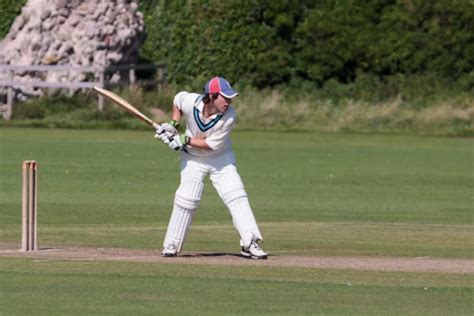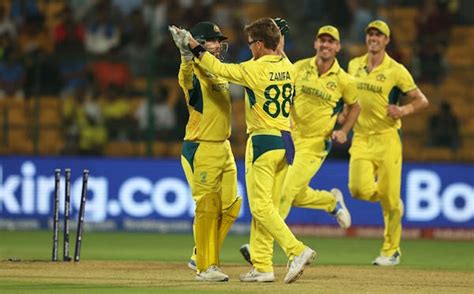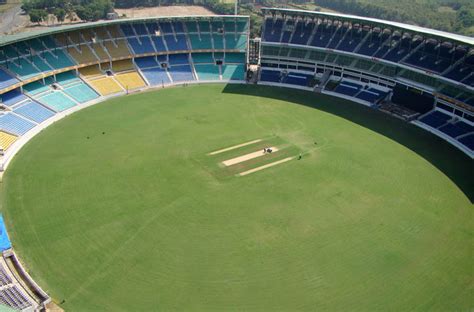Explore the critical role of a well-planned batting order in team performance, key strategies, and historical analysis for optimizing effectiveness in matches.In the exhilarating world of cricket, the success of a team often hinges on one crucial element: the batting order. A well-planned batting order is not just a strategic alignment; it’s a critical component that can significantly influence the outcome of matches. Understanding how to optimize this order can elevate team performance and enhance individual player contributions. This article delves into the importance of cricket batting order, exploring how it affects team dynamics and overall effectiveness on the field. We will discuss key factors that impact batting order decisions, common strategies for optimization, and provide insights from past matches to illustrate the significance of this aspect of the game. Whether you are a player, coach, or avid fan, the insights shared here will illuminate why a thoughtful approach to batting order is vital for success on the cricket pitch.
Understanding The Importance Of A Well-Planned Batting Order
The batting order in cricket is a critical aspect that can significantly influence the outcome of a match. Understanding the importance of a well-planned batting order is essential for teams striving for victory. A thoughtfully constructed batting sequence tailors a team’s strengths against the opposing bowling lineup, ensuring that the most capable players face the right challenges at crucial moments.
In essence, a well-structured batting order considers the various roles that each player fulfills. For instance, openers are typically aggressive, intending to score quick runs, while middle-order batsmen are often specialized in stabilizing the innings or accelerating scoring based on the match situation. By aligning players’ strengths and weaknesses with game scenarios, teams can enhance their overall performance.
Furthermore, a strategic batting order can provide necessary support to players adapting to difficult conditions or provide a foundation for a strong finish. Scrutinizing past performances and current form aids in determining the right order to enhance synergy within the team. Every run matters, especially in close games, and understanding the importance of batting placements can be the difference between victory and defeat.
Managing the batting order is not merely about placing players; it’s about creating a cohesive strategy that maximizes scoring potential and exploits opponent weaknesses. Ensuring that each player knows their role in the batting order can build confidence and improve decision-making during clutch moments in matches.
How Batting Order Affects Team Performance In Matches
The batting order in cricket plays a crucial role in determining a team’s performance during matches. It is not merely a sequence of names; it is a strategic decision that can make or break the game. A well-thought-out batting order considers individual player strengths, weaknesses, and synergy within the team. This strategic arrangement can significantly influence the outcome of a match, impacting aspects such as scoring pace, pressure management, and overall team morale.
One of the key effects of batting order on team performance is how it matches players against specific bowlers. Top-order batsmen are usually more adept at facing new ball bowlers and can capitalize on the conditions early in the innings. In contrast, middle-order batsmen might excel in handling spin bowlers or pace under pressure, thereby altering the course of the game based on when they come in to bat.
A strategic batting order can also mitigate risk factors. For instance, deploying a pinch-hitter early can unsettle the opposition and encourage an aggressive mindset that could lead to a quick surge in runs. Similarly, protecting a team’s best players (top-order batsmen) from early wickets is essential to ensure a robust foundation for chasing targets or setting challenging scores.
The importance of rotating players based on the match situation cannot be overstated. Flexibility in batting order allows teams to adapt their strategy in real-time, responding to factors such as pitch conditions, opposition strengths, and match scenarios. As a result, teams that effectively manage their batting order often find themselves better positioned to seize momentum and control throughout the match.
The psychological aspect of batting order should not be overlooked. Players often perform better when they understand their roles and responsibilities. A well-defined batting order enhances focus and confidence, contributing to overall team dynamic and performance on the field.
Key Factors Influencing The Importance Of Batting Order
Understanding The Importance of a well-structured batting order is crucial for maximizing a cricket team’s potential. Several factors play a significant role in determining the effectiveness of a batting order:
By carefully considering these factors, teams can set a batting order that significantly enhances their chances of success in matches. A well-planned order can turn the tides of a game, showcasing the undeniable The Importance of strategic decision-making in cricket.
Common Strategies For Optimizing Batting Order Effectiveness
In the realm of cricket, understanding The Importance of a well-structured batting order cannot be overstated. Here are some common strategies that teams utilize to optimize their batting order effectiveness:
By incorporating these strategies, teams can effectively enhance their chances of success, further emphasizing The Importance of optimizing the batting order in cricket matches.
Analyzing Past Matches: The Importance Of Batting Order Decisions
To truly grasp the importance of a well-structured batting order, looking back at historical matches can provide invaluable insights. Many games have been heavily influenced by the order in which players batted, showcasing how strategic decisions can impact the outcome.
For instance, consider the famous 2019 ICC Cricket World Cup match between India and New Zealand. India’s decision to send in their top-order batsmen early on was crucial, as their stellar performances paved the way for a high score. Conversely, when the team delayed promoting a skilled finisher until too late, it became evident how pivotal timely batting order adjustments could be.
A tangible way to analyze the impact of batting order decisions is by examining a few key matches:
| Match | Batting Order Decision | Outcome |
|---|---|---|
| India vs. New Zealand (2019 WC) | Top order batted first | India won |
| Australia vs. England (Ashes 2015) | Middle order promoted for chase | England lost |
| South Africa vs. Pakistan (T20 2020) | Finisher held back | South Africa lost |
These examples highlight that the effectiveness of a batting order isn’t just theoretical. It’s a practical element that can make or break a match. Teams that analyze past performances and learn from both successes and failures can refine their strategies, ensuring that they make informed decisions during crucial encounters.
The interplay between batting order and match outcomes reinforces the importance of careful planning and analysis. By studying how previous decisions impacted results, teams can craft a batting strategy that enhances their chances of victory in future competitions.
Frequently Asked Questions
What is a batting order in cricket?
The batting order is the sequence in which players are scheduled to bat during a cricket match. It is crucial for a team’s strategy and performance.
Why is the batting order important?
The batting order is important because it affects the team’s scoring potential and the match outcome. It helps in leveraging players’ strengths against opposing bowlers.
How does the batting order impact team strategy?
The batting order impacts team strategy by influencing match tactics, such as when to play aggressively or defensively, based on the opponents and match situation.
What factors influence the selection of the batting order?
Factors include players’ skill levels, their performance under pressure, the type of pitch, bowling style of the opposition, and game circumstances.
Can the batting order change during a match?
Yes, teams can adjust the batting order during a match based on the game situation, player form, and strategies against particular bowlers.
What role does the captain play in determining the batting order?
The captain plays a crucial role by assessing match conditions and player form, deciding the batting order to maximize scoring opportunities and balance the team.
How can an ineffective batting order affect a team’s performance?
An ineffective batting order can lead to early wickets, restricted scoring, and ultimately a loss, as it may not utilize players’ strengths effectively against the opposition.









